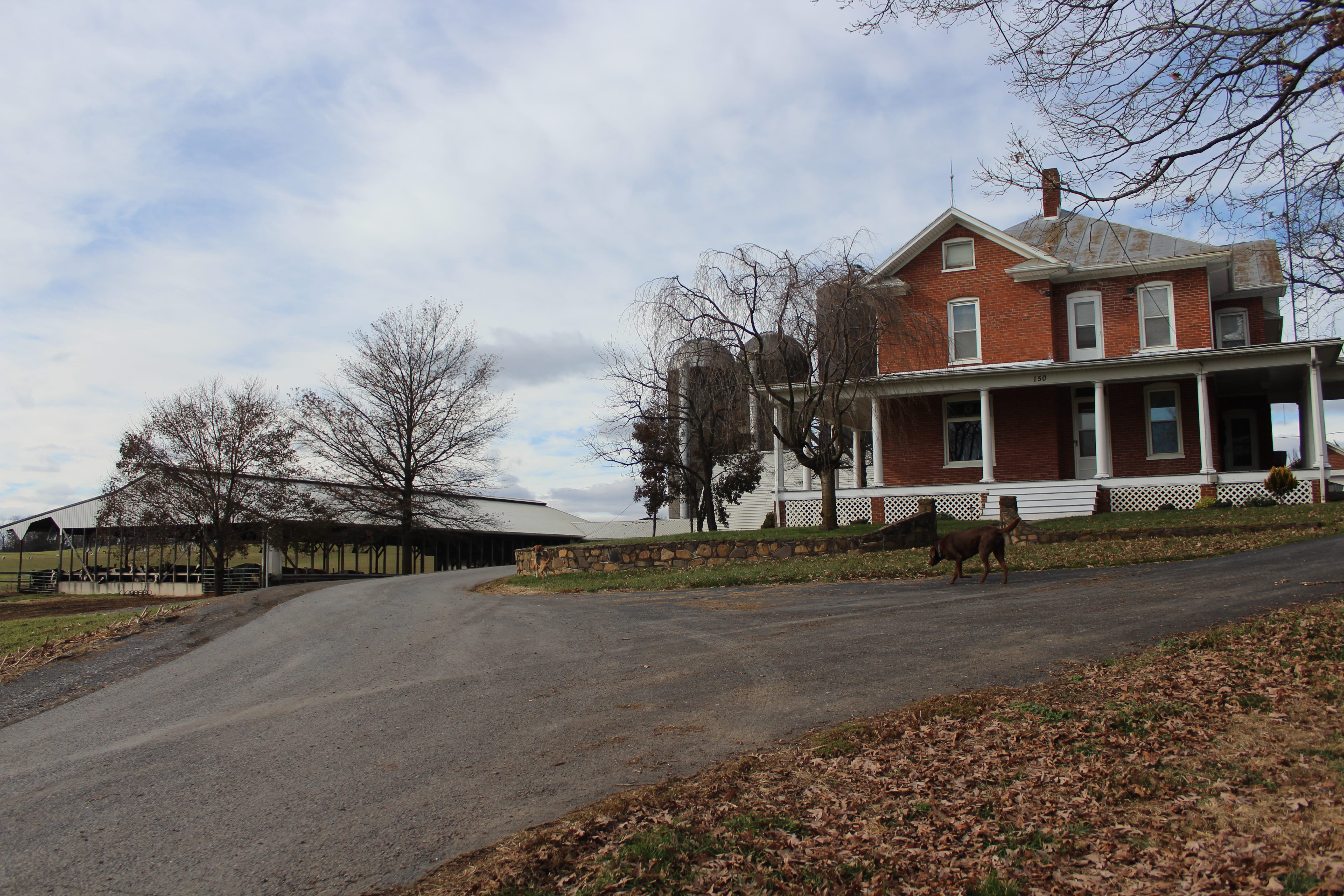
Story, photos and video by Caleb Ayers, contributor
6:30 am, Dayton, Va.
Dan Myers steps out of his white Ford F-350 and onto the muddy ground just as the morning light begins to illuminate his family’s dairy farm, Walkup Holsteins. In the partially-covered pavilion in front of him, more than 30 pregnant dry cows lay on beds of straw and wood shavings.
As he walks down the cement path that separates the two groups fenced in on each side, Dan counts to make sure that nobody gave birth overnight. The cows watch him, each breath steaming out of their nostrils in the freezing morning air. Once the first cow stands up, a chain reaction ensues, bringing all the cows to their feet and approaching the fence. When Dan confirms that the night has brought no new calves, he grabs the push broom and sweeps the hay off the path.
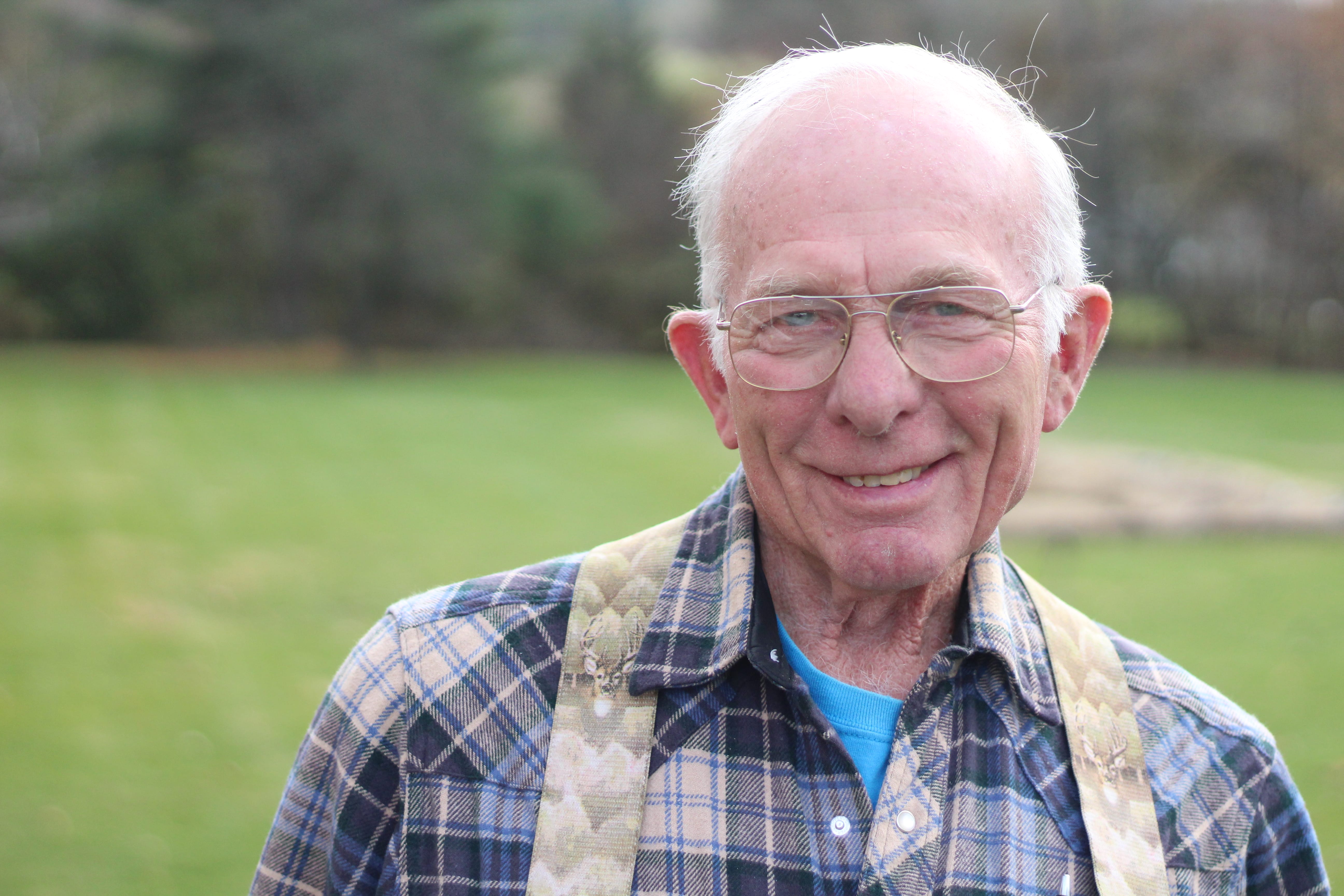
Dan Myers
At 79 years old, Dan has been working on this farm for his entire life. His glasses accentuate his bright blue eyes, his fisherman’s hat protects his wispy gray hair, and his tall black boots and heavy tan coat complete his farmer’s look.
At the milking parlor on the other side of the farm, Dan’s wife Charlotte, 77, and their daughter Teresa Callender, 53, are around halfway through milking the cows, a process that they started just after 5 a.m. The similarities abound between the two: their facial structures and expressions, the bandanas around their heads — which they said are at least partially to protect themselves from splattering feces — and the strength they exude in their work.
Drawing on decades of experience, they perform the same routine over and over. First, Teresa ushers eight cows from the holding area into two lines on either side of the parlor. Once they align cows with milking machines, Teresa and Charlotte move down the line, completing the same steps at each cow: apply disinfectant foam, check the milk’s consistency, wash, rinse and dry the utters and then plug the air-powered vacuum milker to each of the teats. A wall box next to each milker initiates the suction, which pumps the milk into the main holding tank. Once all eight milkers detach and Teresa and Charlotte apply a lanolin-based “post dip” that helps the teats close, they open the front door, letting the cows back into the covered feedlot. When one group leaves, Teresa leads another in from outside to start the process again.
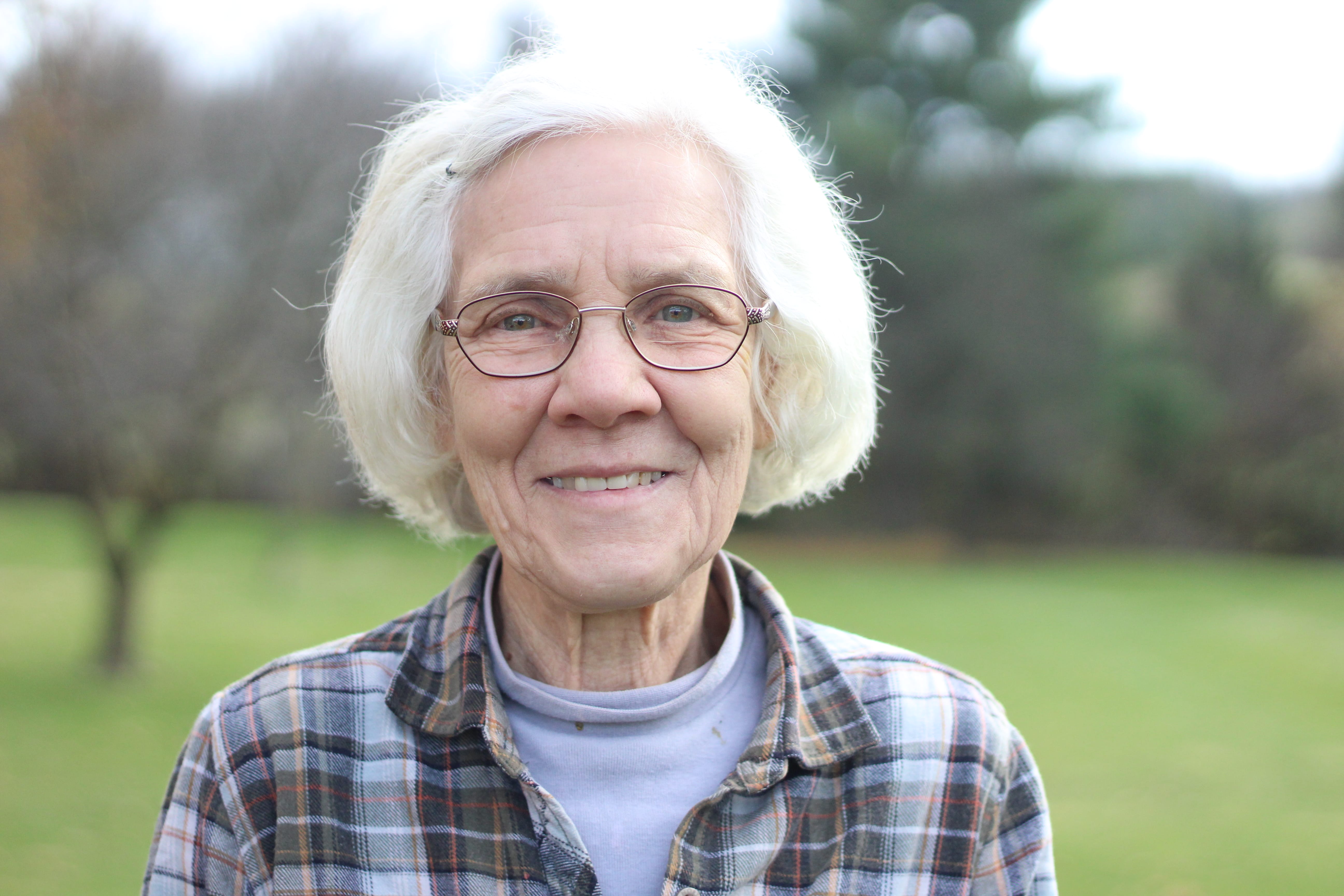
Charlotte Myers
They perform this same, several-hour routine every morning and afternoon, regardless of weather or holidays. Over the 141 years and seven generations that the family has managed to keep the farm, their livelihood of working with dairy cows has also become an integral part of their family identity.
But, as is the case for dairy farms across Virginia and the nation, the troubled milk market — marred by oversupply and falling demand — threatens to rip away their way of life. Whether this 141-year-old family tradition continues for the remainder of Dan and Charlotte’s lives, and provides a livelihood for future generations, depends on what wins out: a declining, volatile dairy market, or the family’s resilience.
The family first obtained the farm in 1877 when Jackson and Catherine Showalter purchased the land in the Dayton area of Rockingham County. Since then, they’ve managed to keep it through 26 different presidential administrations, the addition of 12 U.S. states, the Great Depression and two world wars. Over those years, farms have generally increased in size and productivity, and diminished in number. And the number of farmers in the United States population has shifted from nearly half in the 1880s to only 2 percent today.
In 1918, 7-year-old Victor Myers, who grew up to become Dan’s father, obtained the farm’s first registered Holstein heifer calf for a 4-H project. Holsteins boast the highest dairy production of any animal in the world. As their herd grew, the Myers adopted the prefix “Walkup” when they registered with the Holstein Association USA in 1927. Today, the Myers maintain a herd of about 130 milking cows that produce roughly 279,000 pounds (almost 32,450 gallons) per month.
Dan spent his entire childhood on the farm, drinking raw, untreated milk from the tank, something that the family still does today. As a kid he also learned to show cattle, but he didn’t — and still doesn’t — enjoy the awards and fanfare. When he was 9, nobody could find Dan for the award ceremony after he showed a cow in the Rockingham County Fair. “When they came out to get me, I was out there in the ball field, playing with my trucks,” he says.
After meeting at a skating party as teenagers, he and Charlotte dated for several years. She had always enjoyed the outdoors, but she was unfamiliar with farm life until she began dating Dan. “I guess I enjoyed being around the cows some, but I didn’t ever think I was going to get into what I’m into: milking cows and taking care of calves,” she says.
They married in 1961, and Dan completed his bachelor’s in mathematics from Bridgewater College three years later. Then he taught high school mathematics at Broadway High School for the next four years, but continued milking and working on the farm the whole time. In 1968, after Dan quit teaching, he and Charlotte bought the farm from his father, returning to full-time farm life. They now have two children — Teresa and DJ, 48 — who, have also been involved on the farm their entire lives.
Most of the buildings and structures that currently reside on the farm were built under Dan’s watch. As a way to commemorate the history and document the farm’s progress, the family has etched the year of completion into each building and structure.
In 2002, Dan, Charlotte, DJ, Teresa and her husband Don, 53, formed Walkup Holsteins LLC. Each of them, along with Don and Teresa’s two daughters and DJ’s daughter, are invested into the farm as their livelihood, but they view the cows as more than a source of income. They know most of the cows by some combination of name, traits and stories.
“We have 250 pets,” says Dan.
“They all have different personalities,” says Teresa. “They’re like people, some good, some not so good.”
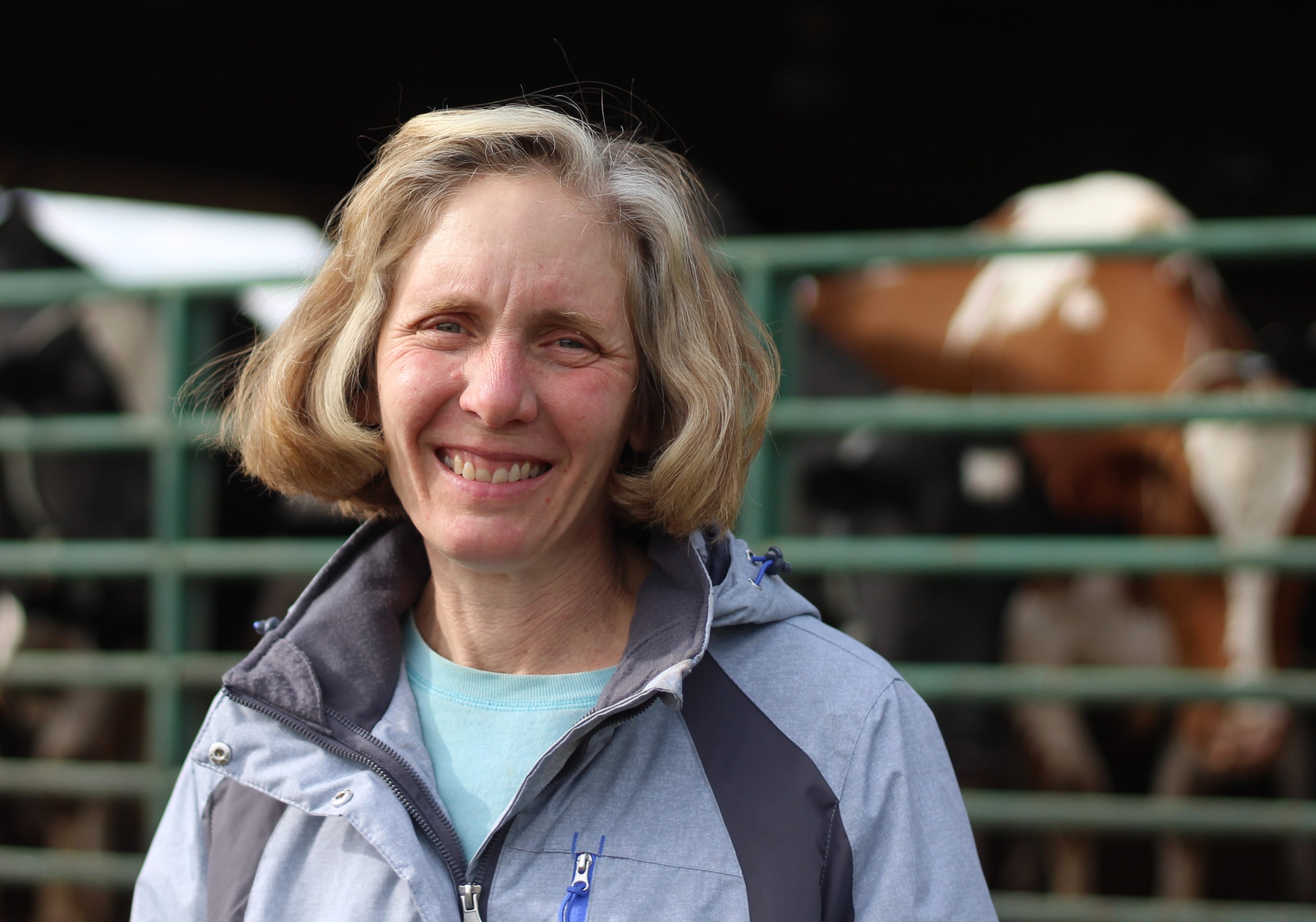
Teresa Callender
Although the family enjoys the work, it is hard and requires long hours. Decades of intense, consistent labor have taken their toll, especially on Dan and Charlotte. The non-stop work and the ever-moving hands of time have sapped some of their strength and ability.
“All these dairy activities have cost me two knees and two hips,” says Dan.
But in recent years, the real toll has been on their finances. Across the country, the economic situation for dairy farms has been deteriorating for several decades. Data from the US Department of Agriculture indicates that per-capita fluid milk consumption has declined by more than 35 percent since 1980. Yet, over that same time, milk production has more than doubled.
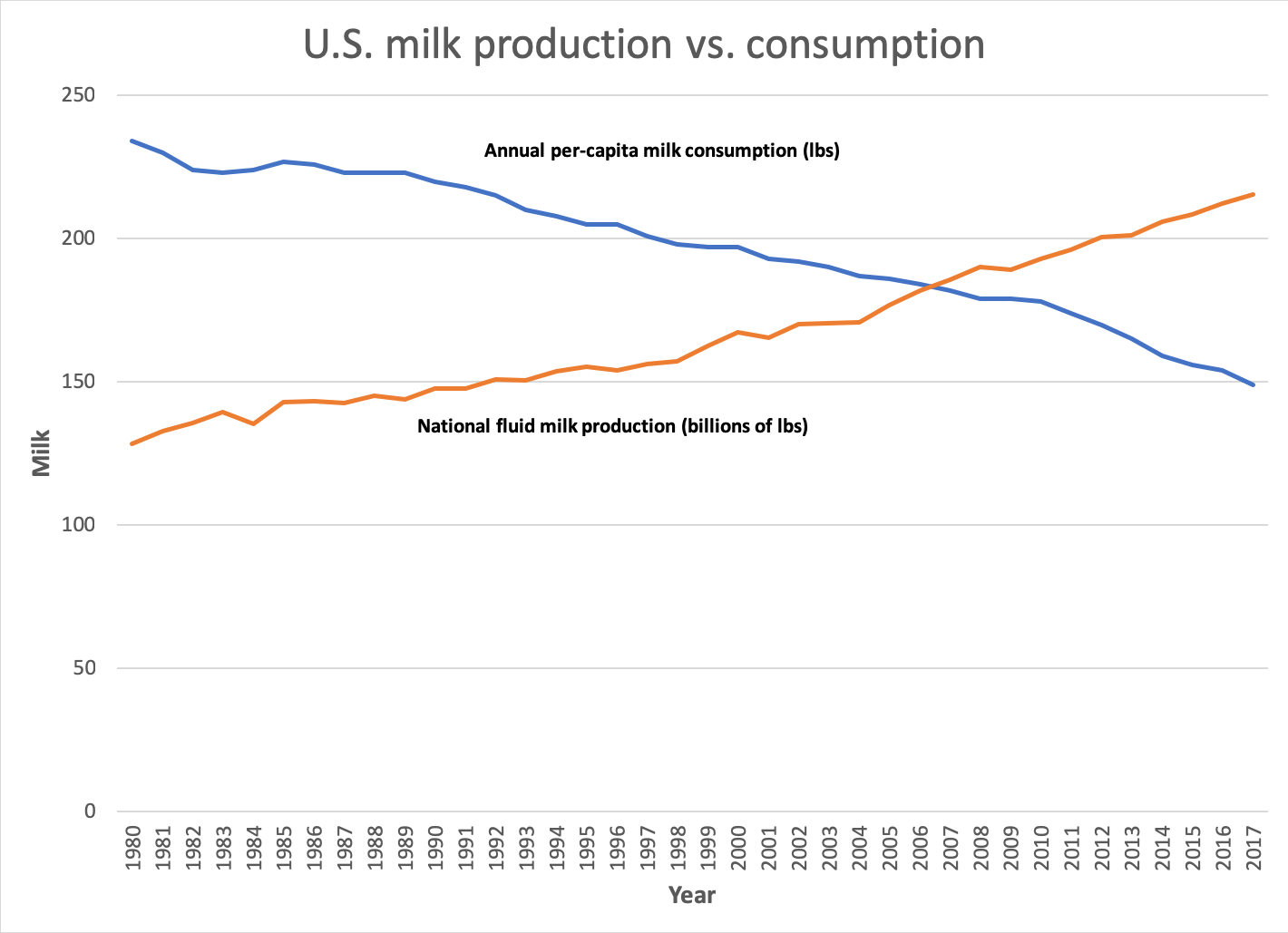
Source: U.S. Department of Agriculture
Most dairy farms in Virginia are similar to Walkup Holsteins: small, family-owned enterprises. But with an increased emphasis on efficiency, large-scale dairy farms — which can afford to make less per gallon because of the sheer volume they produce — are driving down prices and rendering the small, family-farm model ineffective.
“Most of where we see production headed are these larger, multi-thousand head dairy operations that are more or less feedlots,” said Tony Banks, a commodity marketing specialist with the Virginia Farm Bureau Federation.
Premiums from the Virginia State Milk Commission initially delayed the decline in Virginia, but it is in full force right now. Over the last 22 years, Virginia has lost about 1,200 Grade A dairy farms, says Banks. The depression has waxed and waned, with occasional spikes — such as 2014, where prices across the country soared to record highs — punctuating deep, long depressions that ravage farmers’ finances.
“Those peaks are not as long-lived as the valleys in these price-cycles,” Banks says. “When [Virginia dairy farmers] are making money, they’re not making it long enough or as much to offset the significant economic downturns that they’ve experienced.”
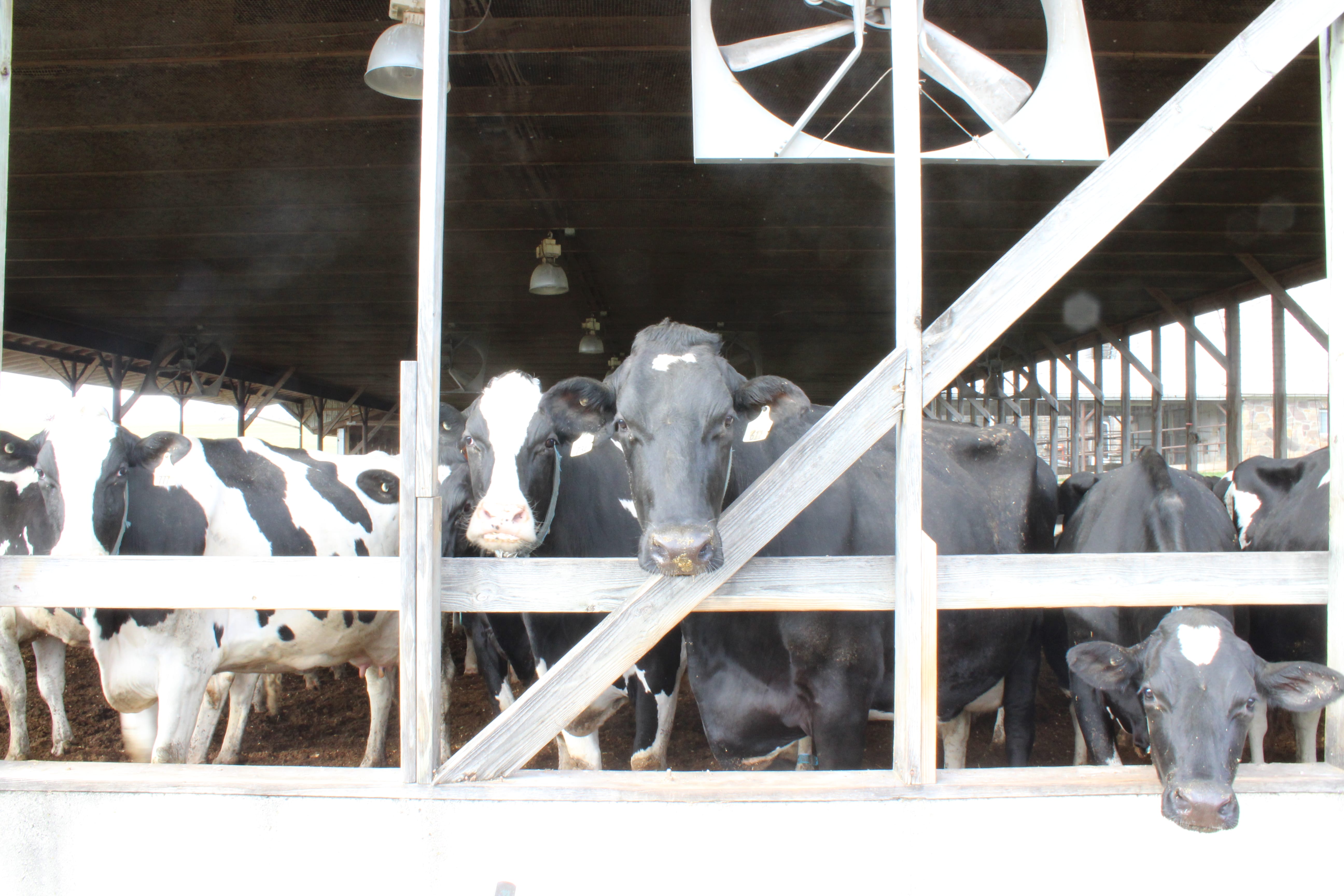 Right now, Virginia’s dairy industry is in the midst of its longest, deepest depression yet. With the gap between supply and demand growing each year, the market has become oversaturated, leaving dairy farmers in a precarious situation — paying more money than they have to produce more milk than they know what to do with. Banks says that a dairy farmer recently summed it up by saying they were “drowning in milk.”
Right now, Virginia’s dairy industry is in the midst of its longest, deepest depression yet. With the gap between supply and demand growing each year, the market has become oversaturated, leaving dairy farmers in a precarious situation — paying more money than they have to produce more milk than they know what to do with. Banks says that a dairy farmer recently summed it up by saying they were “drowning in milk.”
Economists initially thought the market would stabilize this summer, but brutal conditions have persisted. Some have cited trade conflicts with Canada and Mexico as part of the reason why. Regardless, the Virginia Department of Agriculture and Consumer Services data paints a grim picture of the current, deteriorating dairy landscape: 20 percent of Virginia Grade A dairy farms have closed since July 2017. And the disaster has hit dairy farmers across the state equally, regardless of location or experience, says Banks.
“It’s guys that have been in it for decades and decades, it’s third- and fourth-generation, and it’s folks that are first-generation that haven’t been able to survive these sharp price declines that we’ve had in recent years,” he says. “After a while it just eats away all your equity, and it gets harder and harder to weather each storm.”
Other dairy products, such as cheese and yogurt, have grown in popularity, but Banks says those gains have not come close to matching the losses in fluid milk, and not every farmer can make that transition. And to make matters worse, no major improvements in national milk consumption or market prices are in the forecast.
In Rockingham County – the epicenter of Virginia’s dairy industry – Walkup Holsteins has endured the decline better than most. When the market took a deep drop in 2008 and 2009, they were able to pull through and recover over the next several years. And the spike of 2014 allowed them to pay off some debt and make improvements on the farm.
While they’ve handled the past recessions relatively well, the current crisis is forcing them to make difficult decisions. In order to make ends meet, they have been dipping deep into their reserves.
“You get kind of depressed with that after a while…” says Dan. “Why do you keep going? And you have to ask yourself that question. It’s not because it’s a good, profitable deal. There’s got to be other things.”
For Dan, the family tradition of dairy farming has been one of the primary motivators to continue, even when the money isn’t flowing. Looking around and knowing that past generations milked cows on this same farm inspires him, and simply being with the animals also motivates him to continue through these depressing times — both financially and emotionally.
But things may come to a head soon. Barring significant market improvement, Dan is not sure whether they will be able to make through the end of this year.
After cutting costs “down to the nitty gritty,” the numbers are still coming back negative. Over the last several months, their production costs have outweighed their returns by as much as a dollar per hundredweight — an unsustainable rate that translates to a roughly $2,000 loss each month. Dan says that some major reorganization may be their best hope of surviving, but even that may not actually give them the means to not sell.
“I do like our cows,” says Dan. “With the financial situation, I can’t guarantee that they’ll be there next year. It’s going to be tough, it’s going to be a sad day.”
[vimeo 305141425 w=640 h=360] The Farm from Caleb Ayers on Vimeo.
In mid-January of this year, Delegate Tony Wilt-R, who represents Harrisonburg and part of Rockingham County in the Virginia House of Delegates, presented a bill that would provide tax credit to Virginia dairy farms that are selling their milk for less than the cost of production.
“[Dairy farms] are just a valuable asset to our business community and to our communities as a whole,” Wilt says.
In order to qualify, the farms would need to have developed or already implemented either a nutrient management plan or a resource management plan with the Department of Conservation and Recreation.
However, a House subcommittee tabled the bill for now. “Every member agreed with the concept,” says Wilt. “They know that there’s a problem, but at the same token, we’ve got to balance our books.”
To that end, Wilt says the House Finance Committee is currently working with Virginia Department of Agriculture and Consumer Services to see if there are any other measures the state can take to help the remaining smaller dairy farms survive.
If the state tax breaks or other help does eventually come, however, it will likely be too little, too late for a lot of these dairy farms, including Walkup Holsteins
Like many farmers, Dan and Charlotte don’t have IRAs or substantial retirement savings. With the intent of helping their family as long as possible, and considering the current economic situation, retirement isn’t a feasible option –– and, frankly, that’s not what they want to do.
“I don’t know that I consider it a job,” says Dan. “It’s a life, it’s what we’ve done.”
How much longer it lasts, though, is now very much in question.















